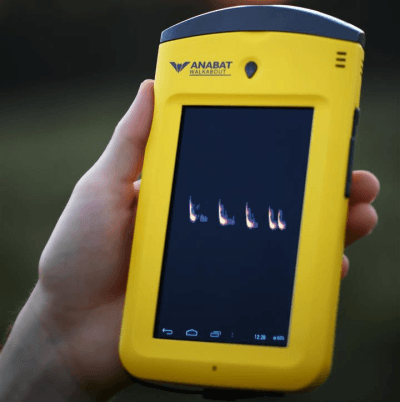
Hi there,
What can I say about the Wildlife Acoustics Kaleidoscope Software?
If you're looking for analysis software that makes it easy to quickly scan through thousands of sound files, label recordings and create custom classifiers, Kaleidoscope is hard to beat.
You can subscribe to Kaleidoscope Pro or, if you're in a university, you can buy a Kaleidoscope Pro University subscription (requires a university purchase order).
Renewing your Kaleidoscope Licence: To renew your Kaleidoscope licence simply purchase an annual subscription and we will credit your Wildlife Acoustics account.
Suitable for Windows, Mac and Linux operating systems.
I want you to be 100% happy with your purchase so call me on 0333 9000 927 for advice.
Warm Regards,
Martin.
MINIMUM REQUIREMENTS
Your computer should have at least 8 GB RAM memory for efficient operation.
WINDOWS: Minimum OS Win 7
MAC OSX: Minimum OS 10.8
After download move the Kaleidoscope 5 app to the Applications folder.
LINUX: Red Hat
CPU OPTIMIZATION
Kaleidoscope 5 can run multiple operations (threads) simultaneously during batch processing. This allows Kaleidoscope 5 to take full advantage of computers that implement multiple CPU cores. By default, Kaleidoscope 5 will try to maximize efficiency by using a number of threads equal to the number of available cores, plus one. Memory usage will also grow proportionally with the number of concurrently processing threads. The number of threads used by Kaleidoscope 5 can be adjusted via the pull-down menu in the upper right corner of the Control Panel. This may be necessary on a machine with limited memory or CPU power available. It may also be desirable to lower the number of simultaneous threads if other tasks are running while Kaleidoscope 5 is working in the background.
DRIVE OPTIMIZATION
For general archiving, any type of data storage will work. The speed and efficiency of the drive that contains the input and output files will make a significant difference to the time it takes for Kaleidoscope 5 to do batch processes. In general, the internal drive of the computer will provide the most reliable performance. If an external storage medium is used, batch process performance may be adversely affected. For example, an SSD will always provide better performance than a USB thumb drive. If input files are initially stored on a slow external storage medium, copying the files to the internal drive of the computer before running the batch process may be required.

Recorders to be left out on site and producing full spectrum files.

Hand-held recorders that can record full spectrum files and most of them log GPS co-ordinates.

Hand-held recorders that can record birds, frogs and other audible species. Some also record bats.
Comment from a client:
"My bat detector microphone failed during a dawn survey and knew that I had a group of dusk surveys starting in two days time. I was not in a good place as I did not have a spare, but my equipment was less than a year old.
After my survey I contacted Martin by email and he called me back on the same day, a few hours later, after a quick nap. He told me he did not have a part in stock, but had already contacted the supplier on my behalf.
The next day I received a replacement part, free of charge and express delivered from Switzerland. I thought it was amazing, and could not believe it was resolved so quickly.
Due to Martin's exceptional service I was good to go with the surveys, and I really would like to thank Martin and Wildlife Countryside Services for making the dusk surveys happen."
David Kent
© 2015 Bat Detectors UK, part of Wildlife & Countryside Services
